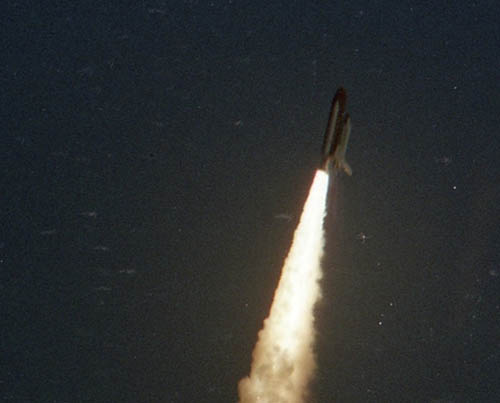Hey Doc Z – I keep reading about all these solar flares, coronal mass ejections, and the like that are going to slam all sorts of cosmic radiation into Earth. And also into the Moon, into Mars, and maybe into ships (one day) that travel from here to there. I know it’s not a big deal now – but what about in the future, when we have people living in orbit, living on the Moon, exploring Mars, and traveling between them?
Would you go on a vacation where you’d only have a 50/50 chance of making it back home alive? What if the odds were less than 10% that you’d survive? No competition, your trip won’t be televised, and you won’t get a prize at the end – and the odds are stacked against you. Would you go?
What about your job – would you take a job that killed over three quarters of the people doing it? Or, for that matter, would you take a job working around moving vehicles, raging fires, dangerous chemicals, and angry people with guns – and that’s just in the office area? Oh – and without training or any sort of protective gear. I’m guessing you’d take a pass on this one.
On the other hand, I voluntarily work with radiation – something that scares much of the population, and I’ve lost count of the number of people who think I’m nuts for working with that particular hazard. I’m OK with radiation, though – because I’ve had a lot of training and even more experience, I understand the risks and how to minimize them, and over the years I’ve come to love the work. As an occupational hazard, I’ll take radiation over chemicals, microbes, or spiders any day of the year. Oh – and because of the training I’ve had, because I understand the risks and how to reduce them, and because I choose to work with the radiation, I’m allowed to get as much as 50 times more occupational radiation dose every year than, say, my father, who has never been trained as a radiation worker. So what’s this got to do with your question?
Ferdinand Magellan left Sanlucar de Barameda Spain on September 20, 1519 with five ships and 270 men. Three years later, on September 6, 1522 the sole remaining ship limped back into port manned by a scant 18 sailors, having lost 93% of the crew to death, imprisonment, and other travails. Today, I can get an around-the-world cruise ticket on a ship that holds thousands, every one of whom is expected to return to port at the end of the voyage in three or four months. Or they can follow the example of my great-Aunt who flew around the world in a few weeks with a handful of others – all of whom also survived their travel. The reason for mentioning this is that there probably wouldn’t be much of a market for around-the-world travel if passengers and crew had only a 7% chance or surviving the trip. Nor should they have to – exploration is a risky job, venturing beyond the boundaries of the known to learn about the unknown; everyday life and vacation are not. So of course we let our explorers voluntarily assume risks that would make most of us blanch or back away, muttering excuses – because the explorers (hopefully!) know the risks they are undertaking, they take on these risks voluntarily, and they train and work to keep those risks as low as possible, even though “as low as possible” is very frequently still appallingly high to those of us watching them from the comfort of our homes.

For a few decades space travel was purely exploratory – astronauts went up, broke new ground, and came back down again. In the exploratory phase the US and the Soviet Union lost ships and they lost people and it was always tragic…but the people were highly trained, they knew the risks and how to reduce them, and they volunteered for their missions. That began to change during the American space shuttle program when Skylab was occupied for weeks and months at a time by astronauts doing science, when less-trained (in spaceflight) mission specialists began going up in the space shuttle to do non-exploration-related work, and when Russian, Chinese, and the American-led International Space Station (ISS) were lofted into orbit with staff living in them for months to more than a year at a time. Not only that, the age of space tourism began in 2001 when Dennis Tito paid for passage to the ISS on a Russian spaceship. The bottom line is that, while the exploration of space will be going on for decades – possibly centuries – to come, we’re also beginning to live and to work in space. And that means that the current radiation dose limits we’ve applied to our explorers will need to be reduced to be appropriate for the residents, travelers, visitors, and workers who will be building humanity’s future in space.
This makes sense and it’s an expected progression. And if we are ever to occupy space and other planets, it’s necessary We will not spread to the Moon, to Mars, or to anywhere else if the fatality rate is 93%; we won’t be able to do so unless living up there is about as safe as living down here – including the risks from radiation.